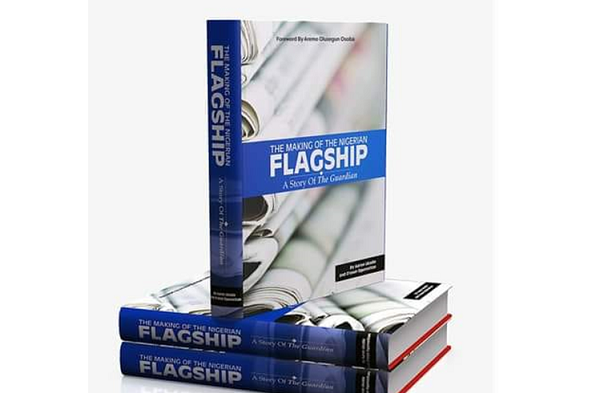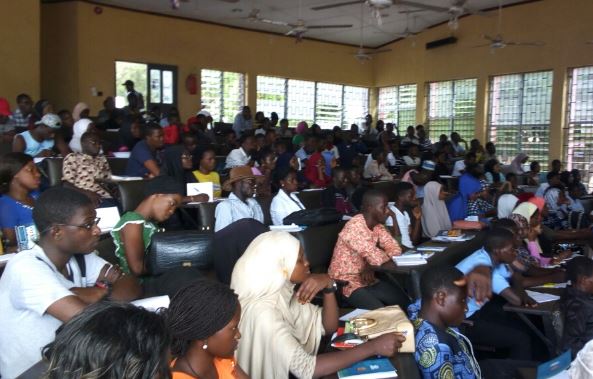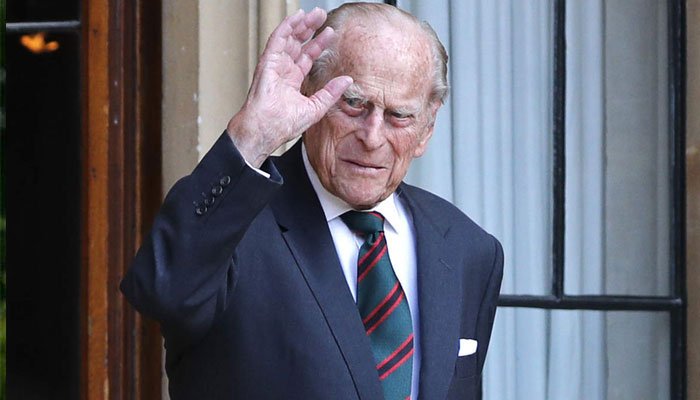BOOK REVIEW: The making of the Nigerian flagship: A story of The Guardian
BY ABIODUN ADENIYI
‘The making of the Nigerian Flagship: A story of The Guardian’ is an expository genre, revealing the significant history of The Guardian Newspapers thirty-eight years after its establishment. Co-written by two of the newspapers’ pioneer journalists, Aaron Ukodie and O’Seun Ogunseitan, the book is a brilliant compromise between an edited work, pulling together a writhe of writers, and a work where authors are essentially original.
This is because of its expansive aggregation of sources and ideas, and their simultaneous ability to synthesize narratives in an ingenious way. The book is an attempt at constructing the evolution of an institution, from a periodized standpoint, and slowly, and surely transporting the reader to a presence, where actors in the evolution’s story are still factors in the contemporary discourse of journalism, and the pathways to its future.
It is systematically in four unequal sections. Section one comprises four chapters, entitled Two Dreams, One Fulfilled; The Structure; Building a Unique Team; and Fierce Battle for Space and Deflation. This section is a penetrating insight into the birth of The Guardian, from the time of envisioning.
Advertisement
It is a gripping account of not just the experimental prowess of the famed Ibru brothers, evening out in the exemplification of Alex Ibru as eventual publisher; but also, the specific roles played by media legends, and intellects like Chief Olusegun Osoba, Dr. Patrick Dele Cole, Dr. Stanley Macebuh, Mr. Lade Bonuola, Mr. Femi Kusa, Professor Onwuchekwa Jemie, Mr. Nick Iduwe, Dr. Yemi Ogunbiyi, and many important others.
The book reveals the role of the effervescent Lady Maiden Ibru, far beyond the traditional notion of a woman being behind a successful man, to a woman being in front of a successful man. This is for her living room defence of the serene, subdued, and somber headline that The Guardian opted for, amongst other advocacies. This section tells us more. How did the name The Guardian come about? How should the structure be modelled? And then the team: what should it compose of?
It went further to unveil reasons behind the paper’s elite orientation, flowing from the high-stake learnings of many of its pioneers, and to their interests in piercing through weaknesses of existing publications-for a niche. What was more? They express the paper’s belief in the elasticity of words, in the pulse of letters, and in the infinite elegance of sumptuous prose. These are compulsory tools the founders fancied in situating the everyday essence of the society.
Advertisement
Section two is longer with nine chapters, and with reflective interpretations. It began with a focus on that page of The Guardian which was not just a marketplace of ideas, but a platform for the production of knowledge. They describe the Opinion/Editorial page as deliberate, emanating from minds ready to make an academy from newspapering.
That page was conceived as a soil for the germination of thoughts, and more thoughts, eventually becoming a reference point to be studied, and not just read. The co-authors tell us all about this, leading to chapters on Strokes of Wits and Sense, and that on The Catchy Intros and Headlines. What more do you expect with the level of erudition on song at The Guardian, if not wits, wisdom, sense, sensitivities, and perspectives?
And then see the news reporting orientation, where the authors are also elaborate. The Guardian introductions and headlines were a delight, according to the writers. Figuratively silent, soft, and sometimes surprisingly sedated, the headlines are suspensive. They prick the imagination, holding it still, for an obligatory interest in the details-and then an addiction.
In their occasionally conversational prose, Aaron and O’Seun were generous with evidence, showing the preference for exclusive stories-a hallmark of The Guardian-, and in how the paper delivered its features stories, with depth, spiced with dizzying, and dazzling prose.
Advertisement
Soon becoming interactional in their narratives, the authors close the second section with The Guardian sky-bound outlook, from interviews with world leaders, a pan-African disposition, and the highlight of another pioneering effort with a focus on The Guardian literary series.
That literary series was another master’s stroke, as it tallies with an audience, thirsting for specific exposition on the literati, and the issues around them. The issues were more of matters of the mind, and how the places and spaces of existence are created in thoughts. It impacted, according to the twin writers.
Section three equally has nine chapters and is concerned about the content and character of practitioners, the ethical flavour of The Guardian journalists, and the commitment to moral uprightness, besides an overarching standard that is spick and span.
In a major chapter, the section veered to accommodating the experiences of forty-one former journalists, comprising a cream of star writers and reporters like Professors Femi Osofisan, and Godwin Sogolo, Senator Ayogu Eze, Honourable Abdul Oroh, and a passel of other professionals. For a moment, the contributors complemented the co-authors in compelling chronicles revitalization the days of yore.
Advertisement
That unit slowed to a conclusion with an account of some challenges, first with the law, via arrests, detentions, trials, and convictions, like the case of Messrs. Tunde Thompson and Nduka Irabor, and then Death in The House like the sad story of Kress Imodibe. In finishing the section, the authors remind us of the crisis of censorship and of repression. They tell us about the tension between press and power, between the right to know, and the machinations against it, and between knowledge and ignorance.
And then into the last section, they come, with six chapters, where they explore the philosophies of faith, the place of money, and revenue, and the importance of purpose overpower. In that segment, the authors are complete with details of the body and soul of a newspaper, its shaping, and shared experiences in the rational spaces of reporting and analysis.
Advertisement
But see: Did they get it all right? Ordinarily impossible! On Page 4 of my copy, the authors talk about “Come with us”, while they also use the word “banging out their stories” on Page 35. There are many more of this journalese or a cash-in on journalism license. With these, they detour from the formal language of communication, in what can create some ambivalence. The pluralization of style in rendition, and in the assemblage of data, could also send different messages in the bid to appeal to a differentiated audience.
Regardless, here we have a book straddling the borders of academic depth, a general interest read, empowered by a pack of journalists, whose names they etch in a nearly exhaustive list of homaging. Congratulations to the writers, for tearing through The Guardian imagination, and situating the paper’s rise from an initial glow to more grandeur.
Advertisement
Salutes to them as well for forerunning some possible further expositions, not just from additional standpoints of The Guardian phenomenon, but for other authors to do the same with other institutions, all in the bid to stimulate the understanding, for the present and the future. Over.
Abiodun Adeniyi, a former The Guardian correspondent, is a professor of mass communication at Baze University, Abuja.
Advertisement
Add a comment






